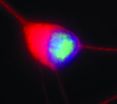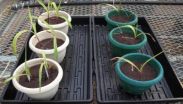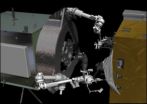(Press-News.org) (SACRAMENTO, Calif.) — Atypical development can be detected as early as 12 months of age among the siblings of children with autism spectrum disorder, a study published by researchers with the UC Davis MIND Institute and UCLA has found.
Published online in the Journal of the American Academy of Child and Adolescent Psychiatry, the study found that close to half of the younger siblings of children with autism spectrum disorder (ASD) develop in an atypical fashion, with 17 percent developing ASD and another 28 percent showing delays in other areas of development or behavior.
Among the 28 percent of children with older siblings with ASD who showed delays in other areas of development, differences were identified in their social, communication, cognitive or motor development by 12 months. The most common deficits were in the social-communication domain, such as extreme shyness with unfamiliar people, lower levels of eye contact and delayed pointing.
The research suggests that parents and clinicians should be vigilant for such symptoms early on among the siblings of children with autism, in order to take full advantage of opportunities for targeted early intervention to improve those children's outcomes.
"Having a child in the family with autism spectrum disorder means that subsequent infants born into that family should be regularly screened for developmental and behavioral problems by their pediatricians," said Sally Ozonoff, study lead author and professor of psychiatry and behavioral sciences at the UC Davis MIND Institute.
"This research should give parents and clinicians hope that clinical symptoms of atypical development can be picked up earlier, so that we can, perhaps, reduce some of the difficulties that these families often face by intervening earlier."
The study was conducted in 294 infant siblings of children with autism spectrum disorder and 116 infant siblings of children with typical development. All of the study participants were enrolled prior to 18 months of age. Data on the children's development was collected at 6, 12, 18, 24 and 36 months of age using a variety of standard developmental tests for autism symptoms.
"Good clinical practice suggests that when children are showing atypical development they and their families should be provided with information about the child's difficulties, clinical reports when practical and referrals to local service providers," Ozonoff said. "The intervention approaches need to be chosen based on each child's profile of strengths and weaknesses and each family's goals and priorities."
INFORMATION:
Other study authors include Gregory S. Young, Ashleigh Belding, Monique Hill, Alesha Hill, Meghan Miller, Sally J. Rogers, Marybeth Steinfeld and Ana-Maria Iosif, all of UC Davis; Ted Hutman and Scott Johnson of UCLA; and A.J. Schwictenberg of Purdue University.
The study was supported by the National Institute of Mental Health grants R01 MH0638398 (S.O.) and U54 MH068172 (Marian Sigman [deceased]).
At the UC Davis MIND Institute, world-renowned scientists engage in collaborative, interdisciplinary research to find the causes of and develop treatments and cures for autism, attention-deficit/hyperactivity disorder (ADHD), fragile X syndrome, 22q11.2 deletion syndrome, Down syndrome and other neurodevelopmental disorders. For more information, visit http://mindinstitute.ucdavis.edu
Atypical development in the siblings of children with autism is detectable at 12 months
2014-03-06
ELSE PRESS RELEASES FROM THIS DATE:
Study: Alzheimer's disease a much larger cause of death than reported
2014-03-05
MINNEAPOLIS – A new study suggests that Alzheimer's disease may contribute to close to as many deaths in the United States as heart disease or cancer. The research is published in the March 5, 2014, print issue of Neurology®, the medical journal of the American Academy of Neurology.
Currently, Alzheimer's disease falls sixth on the list of leading causes of death in the United States according to the Centers for Disease Control and Prevention (CDC), whereas heart disease and cancer are numbers one and two, respectively. These numbers are based on what is reported on ...
Restless legs syndrome may signify bigger health problems
2014-03-05
(Boston)--A nationally-recognized sleep expert has published an editorial describing Restless Legs Syndrome (RLS) as a possible biomarker for underlying disease. The editorial appears in the March 5, 2014 issue of Neurology the medical journal of the American Academy of Neurology and was authored by Boston Medical Center neurologist Sanford H. Auerbach, MD.
RLS is a disorder of the nervous system. Patients with RLS have uncomfortable sensations in their legs which lead to an overwhelming urge to move them – most often at night or whenever the patient is resting.
The ...
Applying math to cancer, climate, crime and cameras
2014-03-05
Improving radiation therapies for cancer mathematically
In a paper published in December in the SIAM Journal on Scientific Computing, authors Li-Tien Cheng, Bin Dong, Chunhua Men, Xun Jia, and Steve Jiang propose a method to optimize radiation therapy treatments in cancer patients.
Radiation therapy is one of the primary methods used for cancer treatment, along with chemotherapy and surgery. While doses of radiation are delivered to eliminate cancerous tissue, care is taken to keep radiation within acceptable levels so as not to affect neighboring tissues and organs. ...
3-D changes in DNA may lead to a genetic form of Lou Gehrig's disease
2014-03-05
New findings reveal how a mutation, a change in the genetic code that causes neurodegeneration, alters the shape of DNA, making cells more vulnerable to stress and more likely to die.
The particular mutation, in the C9orf72 gene, is the most common cause for amyotrophic lateral sclerosis (ALS, also known as Lou Gehrig's disease), and frontotemporal degeneration (FTD), the second most common type of dementia in people under 65.
This research by Jiou Wang, Ph.D., and his colleagues at Johns Hopkins University (JHU) was published in Nature and was partially funded by ...
Look back at US soybeans shows genetic improvement behind increased yields
2014-03-05
URBANA, Ill. – Soybean improvement through plant breeding has been critical over the years for the success of the crop. In a new study that traces the genetic changes in varieties over the last 80 years of soybean breeding, researchers concluded that increases in yield gains and an increased rate of gains over the years are largely due to the continual release of greater-yielding cultivars by breeders.
"This research in some ways looks back and informs us how soybean varieties have changed. It's useful to document these traits and changes," said Brian Diers, a University ...
Fertility prospects following ectopic pregnancy
2014-03-05
WINSTON-SALEM, N.C. – March 5, 2014 – Preserving a fallopian tube following an ectopic pregnancy seems like it would favor a woman's fertility prospects, right?
A new study from Wake Forest Baptist Medical Center looked at pregnancy outcomes in regards to the two surgical treatments for ectopic pregnancy -- salpingectomy, in which the affected fallopian tube is removed, or salpingotomy, in which the tube is preserved.
The aim of the study, said co-author Tamer Yalcinkaya, M.D., a reproductive endocrinologist at Wake Forest Baptist, was to assess whether salpingotomy ...
Maize and bacteria: A 1-2 punch knocks copper out of stamp sand
2014-03-05
Scientists have known for years that together, bacteria and plants can remediate contaminated sites. Ramakrishna Wusirika, of Michigan Technological University, has determined that how you add bacteria to the mix can make a big difference.
He has also shed light on the biochemical pathways that allow plants and bacteria to clean up some of the worst soils on the planet while increasing their fertility.
Wusirika, an associate professor of biological sciences, first collected stamp sands near the village of Gay, in Michigan's Upper Peninsula. For decades, copper mining ...
NASA tests new robotic refueling technologies
2014-03-05
NASA has successfully concluded a remotely controlled test of new technologies that would empower future space robots to transfer hazardous oxidizer – a type of propellant – into the tanks of satellites in space today.
Concurrently on the ground, NASA is incorporating results from this test and the Robotic Refueling Mission on the International Space Station to prepare for an upcoming ground-based test of a full-sized robotic servicer system that will perform tasks on a mock satellite client.
Collectively, these efforts are part of an ongoing and aggressive technology ...
OU study suggests non-uniform climate warming global
2014-03-05
A recent University of Oklahoma study of five decades of satellite data, model simulations and in situ observations suggests the impact of seasonal diurnal or daily warming varies between global regions affecting many ecosystem functions and services, such as food production, carbon sequestration and climate regulation. The effects of non-uniform climate warming on terrestrial ecosystems is a key challenge in carbon cycle research and for those making future predictions.
Jianyang Xia, a research associate in the OU College of Arts and Sciences, says the impact of non-uniform ...
A small step toward discovering habitable earths
2014-03-05
University of Arizona researchers snapped images of a planet outside our solar system with an Earth-based telescope using essentially the same type of imaging sensor found in digital cameras instead of an infrared detector. Although the technology still has a very long way to go, the accomplishment takes astronomers a small step closer to what will be needed to image earth-like planets around other stars
"This is an important next step in the search for exoplanets because imaging in visible light instead of infrared is what we likely have to do if we want to detect planets ...



